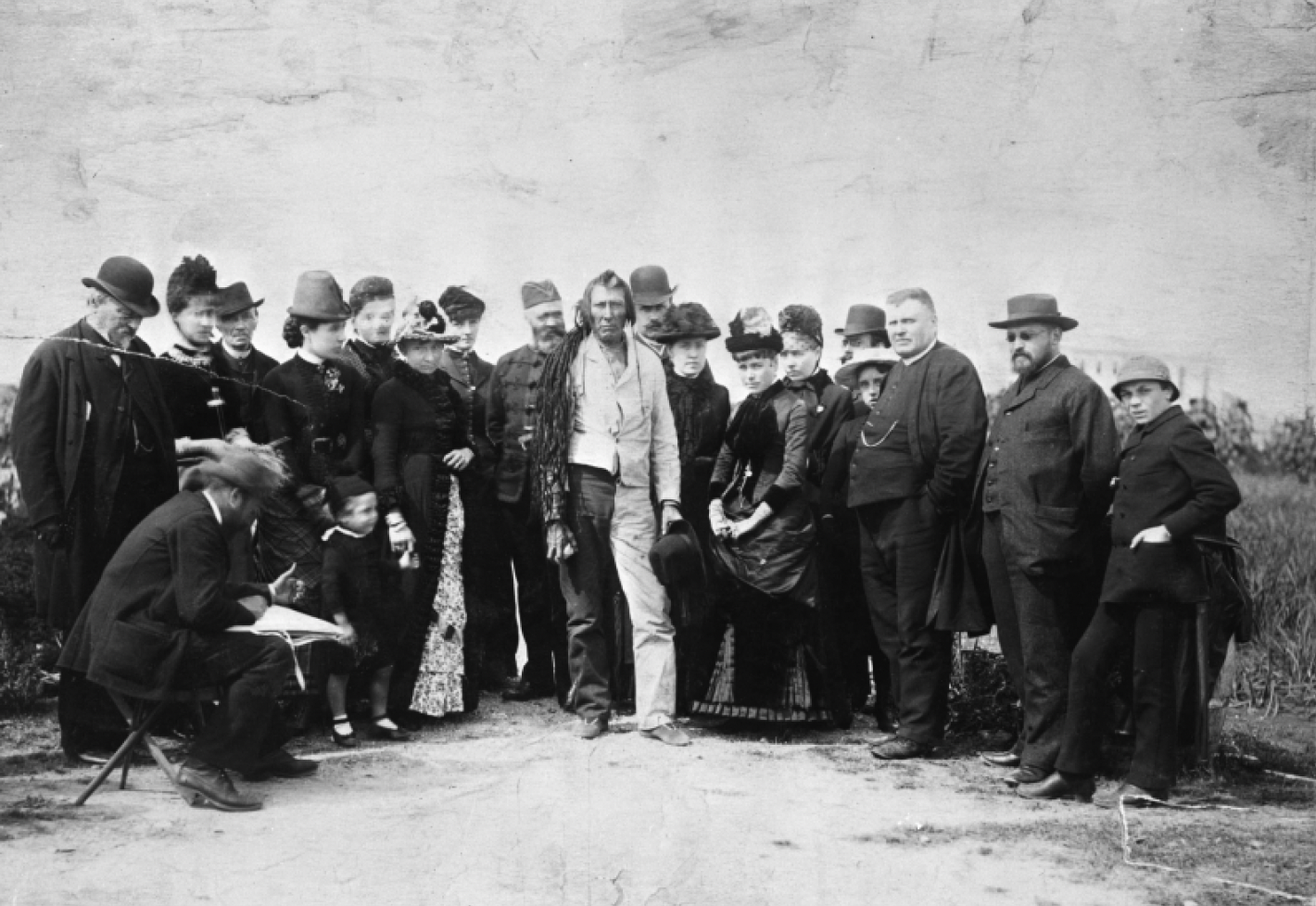
TREATY No 6
The Signing of Treaty 6
Treaty 6 is the sixth of the Numbered Treaties in Canada which was negotiated and signed between the Canadian Crown and the Plains (Paskwâwiyiniwak or Nêhiyawak) and Woodland (Sakâwiyiniwak) Cree, Assiniboine (Nakota) and Saulteaux (Anishinaabek or Ojibwe) Nations. The signings in 1876 and the later signatories, which were added well into the twentieth century, encompass a land area of 121,000 miles (309,760 km2) in what is now the provinces of Alberta and Saskatchewan. Today, there are forty-nine reserves located in Treaty 6 territory, with two bands situated in Manitoba added into the Treaty.
Motivations & Negotiations for Treaty 6
The increasing threat of disease, famine and the encroachment of settlers on Indigenous territory are crucial factors in the motivation for the Cree, Nakota and Anishinaabe nations to advocate for a Treaty. During the mid-1800s, the significant decline of the buffalo due to the demand for food and furs by settler people, had devastating impacts on the cultural, economic and social wellbeing of the Nations on the plains. Smallpox was also sweeping through the population and claiming many lives. For these reasons, the leaders of Cree, such as Atāhkakohp (Starblanket), Mistāwasis (Big Child) and Weekaskookwasayin (Sweetgrass) advocated for protection from disease, famine and for support in education and the transition to agriculture.
In 1871, Wikaskokiseyin (Chief Sweetgrass) and others petitioned the Lieutenant Governor of Manitoba to enter into a Treaty and during the negotiations on Treaty 4 and 5, Indigenous leaders put pressure on the Canadian Crown to negotiate a Treaty farther west of the pre-existing numbered Treaties. Indigenous nations were well aware that their territories were being encroached upon by squatting settlers and colonial agents of the Canadian government. The Cree were especially wary after they stopped the construction of a telegraph line and the work of land surveyors; these were their traditional territories and a Treaty had not been negotiated. The Crown needed to address existing Aboriginal titles to the land for their colonial agenda to be furthered and to avoid conflict and war with Indigenous nations. The Canadian government needed control of the territory and specifically had plans for the Canadian Pacific Railway to run through this part of the land, and so, in 1876, sent a team of Commissioners to begin negotiations.
Treaty 6 Terms
Treaty promises differ from the perspective of First Nations and the Crown and there is much debate on the interpretation of what was and was not promised. From the Crown perspective, the written clauses of Treaty 6 inherited promises from the prior negotiated and signed Numbered Treaties, which includes: surrender of Indian land rights to large parcels of land; parcels of land set aside for reserve lands (in Treaty 6 the equivalent of one square mile per family of five); aid in the transition to an agricultural economy (farm equipment and farm animals); schools on reserve land; annuities of $5 per person (greater annuities to chiefs and headmen); ammunition; and rights to hunt and fish on traditional territory. First Nation signatories of Treaty 6 added clauses addressing disease and famine: the unique clause for the provision of the “medicine chest” to be kept by each band; and the “famine clause” which pledged aid and relief if First Nations were “overtaken by any pestilence, or by a general famine.” Although controversial, the medicine chest clause has been regarded as universal health care for First Nations.
Further Reading
We also suggest reviewing the resources we have pulled together on The Indian Act which was signed the same year at Treaty 6 and provides further context.
NOTE: This article was informed by the further reading resources above as well as photos of 117 pages of correspondence and extensive reports regarding the signing of Treaty 6 at Fort Carleton, Saskatchewan by the Government of Canada Library and Archives, photos of 99 pages of general correspondence regarding arrangements to be made for supplies, clothing, presents, etc for the proposed Treaty 6 at Fort Carleton, Saskatchewan by the Government of Canada Library and Archives, Lieutenant Governor Alexander Morris’ account of Treaty 6, and the book Buffalo Days and Nights by Peter Erasmus (interpreter).
Image details: Chief Poundmaker, Indigenous and Northern Affairs Canada, Treaty No. 6 (Retrieved from the Indigenous Archival Photo Project).
